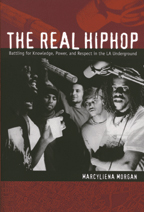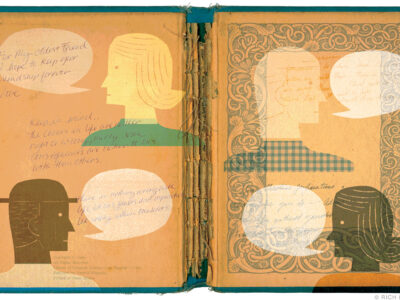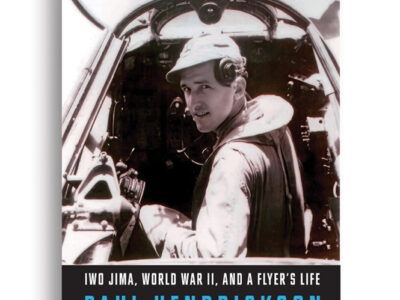A new book on hip-hop gives context to the L.A. scene.
By Nate Chinen

THE REAL HIPHOP:
Battling for Knowledge, Power, and Respect in the LA Underground
By Marcyliena Morgan Gr’89
Duke University Press, 2009. $21.95.
Shortly before midnight on the first Thursday of 1996, vice officers from the Los Angeles Police Department converged on Project Blowed, a grassroots hip-hop workshop and open mic in the city’s Leimart Park neighborhood. What followed was an incursion both swift and confusing, as the officers, in their riot gear, seemed unsure about whether to hem in or disperse the crowd. The incident ultimately ended without serious physical injury, but its aftertaste was bitter. There were accusations of excessive force, and a general feeling of state-sponsored violation among the rappers and artists involved.
Marcyliena Morgan, a professor in Harvard’s Department of African and African-American Studies, examines this confrontation near the final stretch of The Real Hiphop, a close study of the Project Blowed scene. But the event casts a long shadow throughout her book, for a host of reasons. The tensions among institutional authority, communal activity, and individual agency are at the heart of Morgan’s depictions of the hip-hop underground, which she sees as a locus of craft and respect. And law enforcement plays a major role in setting the terms of opposition. “So police think they have the authority / To kill a minority,” goes one line from a famously provocative song by N.W.A., cited both in Morgan’s introduction and her closing arguments with a tone of rueful recognition.
Morgan comes to this assignment with a wealth of context.
“I was there when hiphop appeared in the academy,” she writes—her preferred idiomatic term includes no hyphen—and if that declaration sounds slightly defensive, there’s ample cause. “Although many embrace hiphop now,” she notes, referring to her academic colleagues, “at the beginning they came to it kicking and screaming with their students pushing them from behind.” (That she runs a hip-hop archive at Harvard can be seen as evidence of progress, but one gets the sense that hip-hop studies, as a discipline, still encounters its share of detractors.)
Project Blowed, in any case, provides Morgan with a worthwhile area of scrutiny. An outgrowth of creative energies originally centered around the Good Life, an African-American-owned health-food store, it coalesced in 1994 at KAOS Network, a multimedia arts center run by the filmmaker Ben Caldwell. There, as a Thursday-night open mic, it became a hub of lyrical experimentation and refinement for young Los Angeles rappers, including those in the workshop’s resident crews. Morgan, taking an ethnographic approach, manages to elucidate some of the complex social hierarchies in the Project Blowed community, which has its tribal side, complete with a host of attendant protocols.
Morgan, whose other recent published work is Language, Discourse and Power in African American Culture (Cambridge University Press, 2008), is even better at parsing and defining the language involved.
“To represent in hiphop,” she writes, “is not simply to identify with a city, neighborhood, school, and so on. It is also a discursive turn—it is the symbols, memory, participants and objects and details that together produce art of the space and time.”
The notion of a critical, self-aware discursive mode helps lay the framework for the piece of scholarship that occupies the core of the book: a notated transcription of one of Project Blowed’s freestyle battles, contests of wit and wordplay that unfold spontaneously but with an extraordinary degree of coded subtext.
Morgan focuses on April 18, 1996, for no particular reason except that she was there. (In that sense, her account resembles a meticulous piece of baseball writing about an inconsequential mid-season game.) But her approach, which enlists the tools of linguistic anthropology, sheds light on both the form and content of the verbal sparring between the rappers, or MCs, on deck. And with sharp focus, she reveals the extent to which even improvised banter can assume the formality of Kabuki.
Most of the passages fall short as verse on the page, but there are exceptions, like this ocular-themed parry from a Project Blowed MC named Otherwise:
Well look me in my optical
As I hold you responsible
If you eliminate
Elements of intelligence
Only the logical’s possible
Obstacles you thrust—I
Def with precision
Catch a glimpse of
Without centrifugal, peripheral vision
There is, however, cause for frustration with The Real Hiphop, beginning with the title, which promises a breadth of perspective that Morgan doesn’t truly deliver. For the most part, she uses a microscope rather than a wide-angle lens, and it’s hard not to yearn for more material from beyond this reference point. (There are many outside Los Angeles who have a strikingly different vision of “the real hiphop,” but that’s another story.)
Morgan also chooses not to engage the opposition on a level playing field, readily dismissing cultural criticism from the likes of Stanley Crouch. In an evidently pained chapter called “(Ph)eminists of the New School,” she strains to weigh the rampant misogyny of hip-hop culture against the strong-woman ideal of rappers like Medusa, one of a small contingent of female Project Blowed mainstays.
And with the primacy she places on “the Word” comes a puzzling disregard for the music. There is virtually no discussion of hip-hop on musical terms here. The work of DJs at Project Blowed comes across as merely functional, though it’s doubtful that the DJs themselves—or the rappers, for that matter, or even non-participating patrons—see it that way. It’s possible that Morgan felt obliged to leave this terrain to her musicology-department peers, but that doesn’t excuse a clearly missed opportunity.
When it finally comes to examining the raid of 1996, though, Morgan is on her game. Taking care to note that the LAPD was responding to complaints from Leimart Park business owners—a predominately African-American constituency—she reveals the ambivalence surrounding hip-hop culture among an older generation.
“The police attack on Project Blowed may have been the result of politics, racism, corruption, jealousy, and so on,” she writes, “but it was also framed within African American discourse styles.”
Morgan’s musings on power, language, and mistrust feel no less pertinent now than they must have a dozen years ago in Leimart Park. Weeks after the publication of The Real Hiphop, her Harvard colleague Henry Louis Gates Jr. was arrested in his own Cambridge home, provoking a storm of consternation and debate. One wonders whether Professor Gates would agree with the Notorious B.I.G. lyric that Morgan quotes in conclusion: “Stereotypes of a black man misunderstood—but it’s all good.” OK, he might say, adopting a hip-hop stance. But is it?
Nate Chinen C’97 is a regular contributor to The New York Times, a columnist for JazzTimes, and the sole proprietor of The Gig, a new music blog (thegig.typepad.com).




